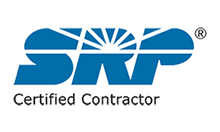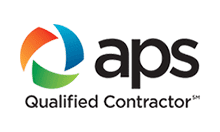If you’re experiencing issues with your heating unit, you may be wondering how long it will take to get it fixed. The duration of heating unit repairs can vary depending on several factors, including the specific problem, the availability of parts, and the expertise of the technician. In this article, we will explore the typical time frames for fixing heating units and the factors that can influence repair durations. We are heating repair experts in the Mesa, Gilbert, and East Valley of Arizona and can help you.
Key Takeaways:
- The time it takes to repair a heating unit depends on the specific problem and various factors.
- Availability of parts and the expertise of the technician can impact the repair duration.
- Common furnace issues may have average repair times, but each repair case is unique.
- Understanding the factors that influence repair durations can help homeowners plan for the duration of repairs.
- Consulting with a professional technician is recommended to get an accurate estimate for the repair time.
Understanding Heating Unit Repair Time Frames
When it comes to repairing heating units, there are several factors that can affect the duration of the repair process. These factors include the complexity of the issue, the availability of replacement parts, and the skill level of the technician.
Factors Affecting Repair Durations
The complexity of the issue plays a significant role in determining how long the repair will take. Some heating unit problems may be straightforward and easily resolved, while others may require extensive troubleshooting and repair work. Additionally, the availability of replacement parts can impact repair durations. If a specific part is rare or needs to be ordered, it may cause delays in the repair process. Lastly, the skill level of the technician involved can influence repair times. Experienced professionals who specialize in heating unit repairs may complete the job more efficiently compared to those with less experience.
Types of Common Furnace Issues and Fixes
Heating units can experience various problems that require repair. Some of the most common furnace issues include:
- Malfunctioning thermostats
- Ignition or pilot light problems
- Clogged filters
- Inconsistent or no heat
These issues can have different levels of severity and complexity, resulting in varying repair times. It’s important to address these problems promptly to prevent further damage and ensure proper functioning of the heating unit.
Average Repair Times for Common Issues
On average, the repair times for common heating unit issues can range from a few hours to a couple of days. For example, fixing a malfunctioning thermostat or ignition problem may only take a few hours if the parts are readily available. On the other hand, resolving issues related to clogged filters or inconsistent heat may require more time, especially if extensive cleaning or replacement is needed.
It’s important to note that these average repair times are just estimates and can vary depending on the specific circumstances of each repair job. Additionally, complex or severe heating unit issues may require even more time and expertise to fix.
Common Furnace Problems and Quick Fixes
Furnaces are essential for keeping your home warm and comfortable during the colder months. However, they can sometimes encounter common problems that can disrupt their functionality. Knowing how to identify and resolve these issues can save you time and money. In this section, we will explore some of the most common furnace problems and provide quick fixes or troubleshooting tips that you can try before reaching out to a professional technician.
Dirty Filters
One of the most common furnace problems is dirty filters. Over time, these filters can become clogged with dust and debris, restricting the airflow and causing your furnace to work harder than necessary. This can lead to reduced efficiency and even system failure. The quick fix for this is to regularly clean or replace your furnace filters. This simple maintenance task can improve airflow, enhance energy efficiency, and prolong the lifespan of your furnace.
Malfunctioning Thermostats
A malfunctioning thermostat can cause your furnace to behave erratically or not produce any heat at all. Before assuming there is a major problem with your furnace, try troubleshooting your thermostat. Start by checking the batteries, ensuring they are fresh and properly inserted. Next, adjust the temperature settings to see if that resolves the issue. If your thermostat is outdated or beyond repair, consider upgrading to a programmable or smart thermostat for greater control and energy savings.
No Heat or Not Enough Heat
If your furnace is running but not producing enough heat or no heat at all, it could indicate a couple of different problems. Firstly, check if the gas or fuel supply to your furnace is turned on. If it is, the next step is to inspect the pilot light or ignition system. Ensure that the pilot light is lit or ignition system is functioning correctly. If not, relight the pilot light or follow the manufacturer’s instructions for troubleshooting the ignition system. If these steps do not solve the problem, it is advisable to contact a professional technician for further diagnosis and repair.
By familiarizing yourself with these common furnace problems and their quick fixes, you can troubleshoot minor issues on your own and potentially avoid costly repairs. However, if you are unsure or uncomfortable with DIY repairs, it is always best to seek the assistance of a qualified professional who can safely diagnose and resolve any furnace problems.
How Long Does It Take to Fix a Heating Unit?
When your heating unit is not working properly, you want to get it fixed as quickly as possible. But how long does it actually take to repair a heating unit? The duration of heating unit repairs can vary depending on the specific problem and various factors. Let’s take a closer look at the estimated repair times for common heating unit issues.
Before we delve into the repair times, it is important to note that these are general estimates and each repair case may vary. The actual duration of the repair will depend on the severity of the problem, the availability of replacement parts, and the expertise of the technician.
Dirty Filters
One common issue that can affect the performance of your heating unit is dirty filters. Dirty filters restrict airflow, leading to reduced efficiency and potential damage to the system. On average, fixing dirty filters can take anywhere from 30 minutes to 1 hour. This includes the time it takes to replace the filters and clean the surrounding components.
Electric Ignition or Pilot Light Problems
If your heating unit is having issues with its electric ignition or pilot light, the repair time can range from 1 to 2 hours. This involves diagnosing the problem, adjusting or replacing the ignition system, and ensuring that the pilot light is functioning correctly.
Malfunctioning Thermostats
A malfunctioning thermostat can lead to temperature fluctuations and an inefficient heating system. Repairing a faulty thermostat can take approximately 1 to 2 hours. This includes troubleshooting the thermostat, recalibrating or replacing it, and ensuring proper functionality.
It is important to note that these average repair times are just estimates. Depending on the complexity of the issue and other factors, the repair duration may vary. To get an accurate estimate for your specific heating unit problem, it is best to consult with a professional technician.
Detailed Look at Furnace Installation Timelines
Installing a new furnace can be a significant undertaking, and it’s important to understand the timelines associated with the installation process. Various factors can influence the duration of furnace installation, and in this section, we will take a closer look at these factors and their impact on the installation timeline.
Factors Influencing the Installation Process
There are several factors that can influence the installation process of a furnace. By being aware of these factors, homeowners can better plan for the time it takes to install a new furnace.
- Complexity of the Installation: The complexity of the installation can impact the timeline. Some installations may require additional modifications or adjustments, which can add to the overall installation time.
- Size of the Home: The size of your home is another important factor to consider. Larger homes may require more extensive ductwork or additional units, which can lengthen the installation process.
- Condition of the Ductwork: The condition of your existing ductwork can also impact the installation timeline. If repairs or modifications are needed, it can add time to the installation process.
By considering these factors, homeowners can have a better understanding of the potential time it may take to install a new furnace in their homes.
The Impact of Home Size and Ductwork on Installation Time
Home size and ductwork condition are two key factors that can significantly influence the installation time of a furnace.
A larger home with more square footage may require a more extensive ductwork system, which can take longer to install. Additionally, if your existing ductwork is in poor condition, it may need repairs or modifications, which can further prolong the installation timeline.
In contrast, smaller homes or homes with well-maintained ductwork may have a shorter installation time.
Understanding the impact of home size and ductwork condition is crucial for homeowners planning a furnace installation. By considering these factors, homeowners can make informed decisions and ensure a smooth and timely installation process.
Conclusion
In conclusion, when it comes to heating unit repairs, the duration can vary depending on the specific problem and various factors. It’s important to keep in mind that each repair case is unique, and there may be unforeseen circumstances that could affect the repair time.
For common furnace issues, there are average repair times that can provide homeowners with an estimate. However, it’s always advisable to consult with a professional technician to get an accurate assessment of the repair time for your specific heating unit.
Similarly, furnace installation timelines can be influenced by factors such as the size of your home and the condition of the ductwork. Consulting with a professional technician and discussing these factors can help you plan for the duration of the installation process.
Whether you’re in need of heating unit repairs or considering a furnace installation, understanding these factors and seeking professional advice will give you a better idea of how long it may take to fix a heating unit or install a new furnace in your home.
FAQ
How long does it take to fix a heating unit?
The duration of heating unit repairs can vary depending on various factors, such as the specific problem, availability of parts, and expertise of the technician. It’s best to consult with a professional for a more accurate estimate.
What factors can affect the duration of heating unit repairs?
Factors that can influence repair durations include the complexity of the issue, availability of replacement parts, and the skill level of the technician.
What are some common furnace problems and their quick fixes?
Common furnace problems include dirty filters, malfunctioning thermostats, and lack of heat. Quick fixes or troubleshooting tips homeowners can try before calling a professional include replacing filters, checking thermostat settings, and ensuring proper power supply.
What are the average repair times for common heating unit issues?
Repair times for common heating unit issues can vary. However, on average, it may take around 1-2 hours to clean or replace dirty filters, 1-2 hours to fix electric ignition or pilot light problems, and 2-3 hours to address malfunctioning thermostats.
How long does it take to install a new furnace?
The duration of furnace installation can be influenced by factors such as the complexity of the installation, the size of the home, and the condition of the ductwork. It’s best to consult with a professional for a more accurate estimate.
What factors can influence the installation process of a furnace?
Factors that can influence the installation process of a furnace include the complexity of the installation, the size of the home, and the condition of the ductwork.
How does home size and ductwork condition impact furnace installation time?
Larger homes may require more time for installation, as they may have more complex ductwork systems. Additionally, if the ductwork is in poor condition, it may need to be repaired or replaced, which can increase the installation time.











